
Protecting Your Photos: How to Encrypt Image Files
Your digital photos are more than just files; they're personal memories, sensitive information, or creative assets that deserve robust protection. While standard file security can be weak, a powerful encryption tool can ensure your images remain private and secure. This overview will show you how to effortlessly encrypt your photo and image files using Folder Lock, a user-friendly security software from Newsoftwares.net.
Why Encrypting Your Photos is a Smart Move
Encrypting your image files with a password is a powerful way to safeguard your data. In a world where devices are easily accessed or lost, this step provides a critical layer of defense against unauthorized viewing. Encrypting photos is essential for:
- Personal Privacy: Keeping private photos and memories safe from prying eyes on a shared computer.
- Business Confidentiality: Protecting proprietary images, product mockups, or sensitive client photos.
- Creative Assets: Securing your artistic portfolio or unreleased photography work.
Any image file you want to keep private, from a JPEG to a PNG, should be encrypted as a necessary security practice.
Folder Lock vs. Built-in Security
When it comes to securing your photos, you have two primary options: relying on basic, built-in features or using a dedicated third-party tool.
Built-in Protection
While operating systems let you hide files, they don't offer true encryption for individual photos.
- The Upside: It's quick and requires no extra software.
- The Downside: This is not true security. A hidden file can be easily made visible with a simple change in settings, leaving your images completely exposed.
A Dedicated Offline Solution
An offline application like Folder Lock is installed directly on your computer and offers a far more secure alternative.
- The Upside: It provides military-grade, AES 256-bit encryption, a global industry standard for data security. Your files are encrypted on your local machine and never uploaded to a third-party server, ensuring maximum privacy.
- The Downside: It requires a one-time download and installation. However, the enhanced security and peace of mind are a worthwhile investment.
For uncompromised security, a dedicated offline tool is the clear choice.
The Folder Lock Method: Unlocking a Simple, Secure Workflow
Folder Lock simplifies the encryption process by creating a secure, virtual container for your data. You can follow these steps to encrypt your image files.
Pre-Requisite
You need to install the Folder Lock application. If you have not installed it yet, you can read How to Download, Install, and Get Started with Folder Lock.
Method 1: Protecting via Safeguard Tab
This method is ideal for securing a file without moving it from its original location.
Step 1: Open Folder Lock
- Launch the Folder Lock application on your computer and log in with your email and password.
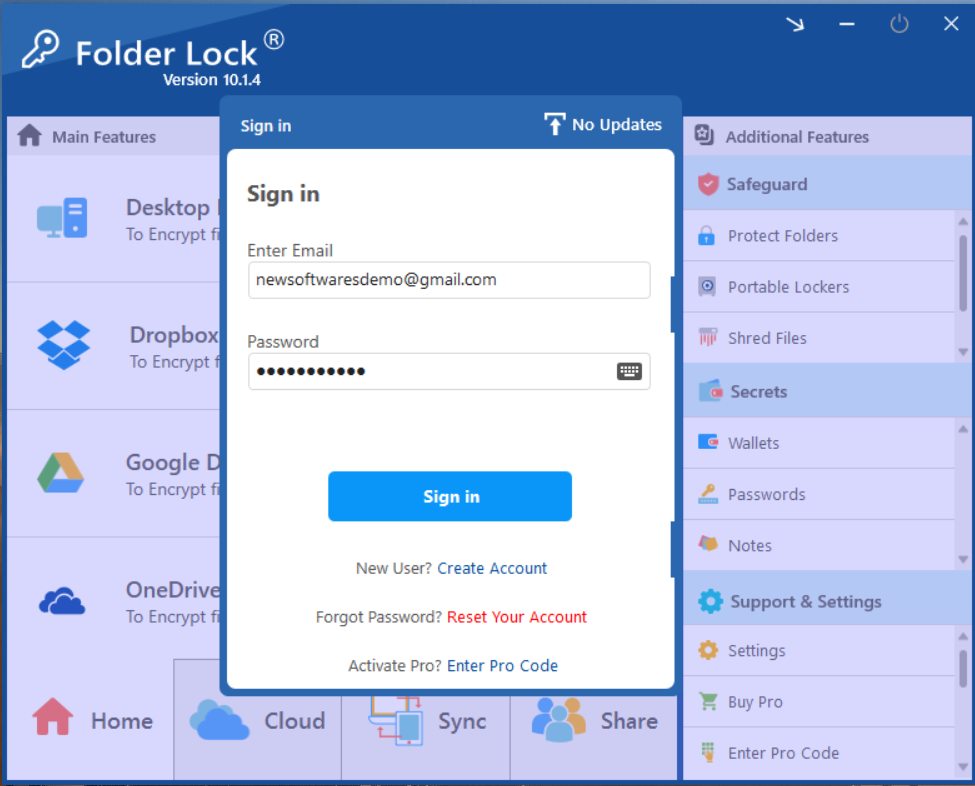
Step 2: Select "Protect Folders Under Safeguard Tab"
- Within the Safeguard section, click on the "Protect Folders" tab. This will open the interface for hiding your items.
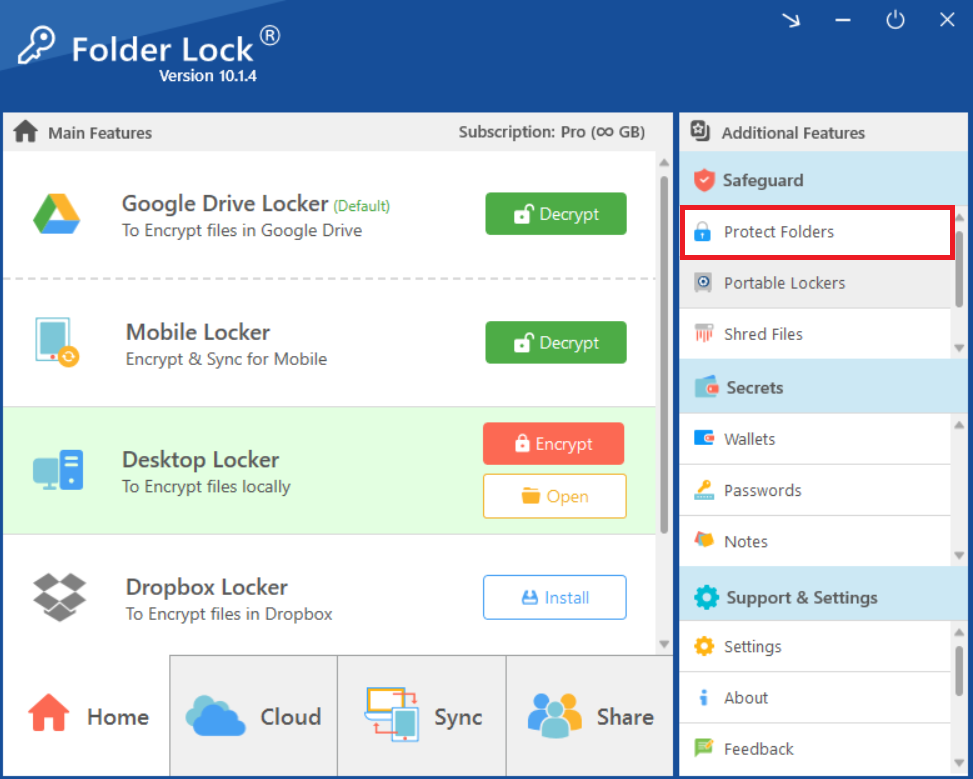
Step 3: Add Items to Lock
- In the "Protect Folders" view, click on the "Add Items to Lock" button at the top of the screen.
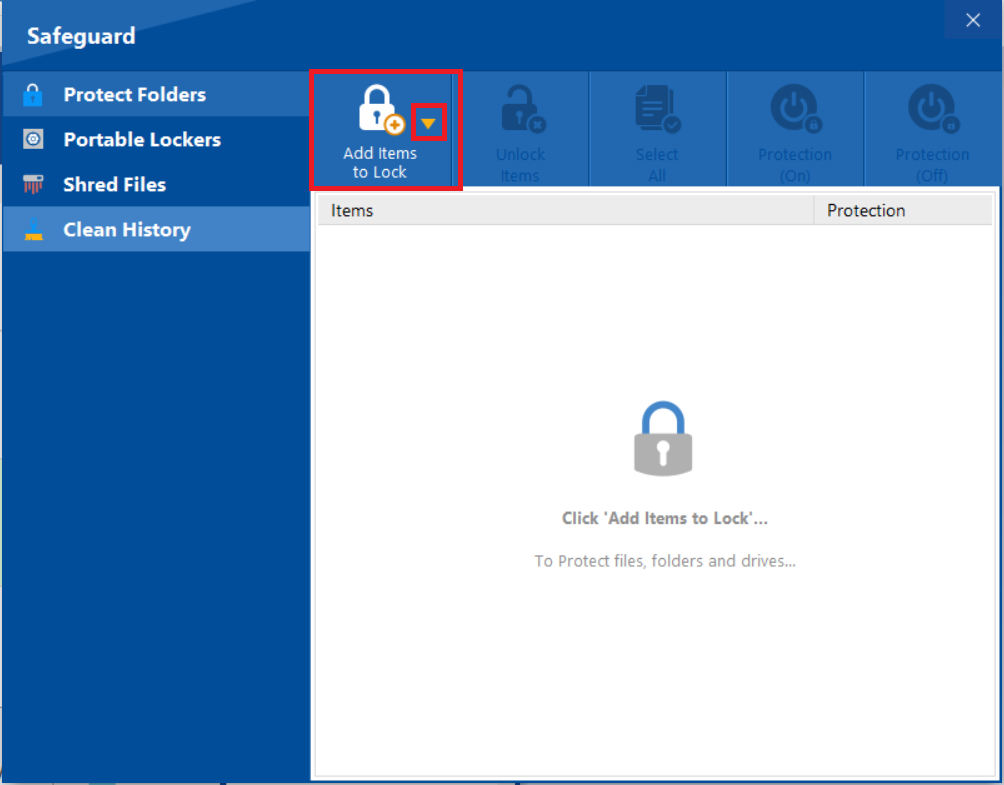
- A dropdown menu will appear. You can choose to add individual "File(s)","Folder(s)," or entire "Drive(s)" for protection. For protection of photos, we will be selecting "Add Files".
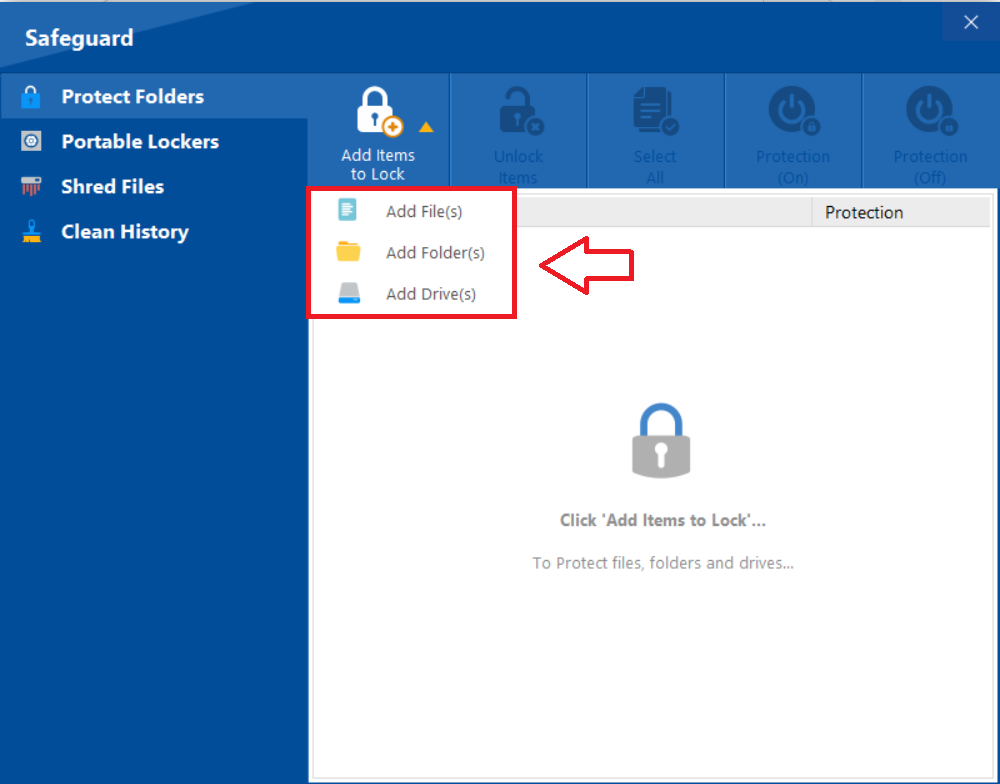
- Click on "Add File" to browse and select your photo.
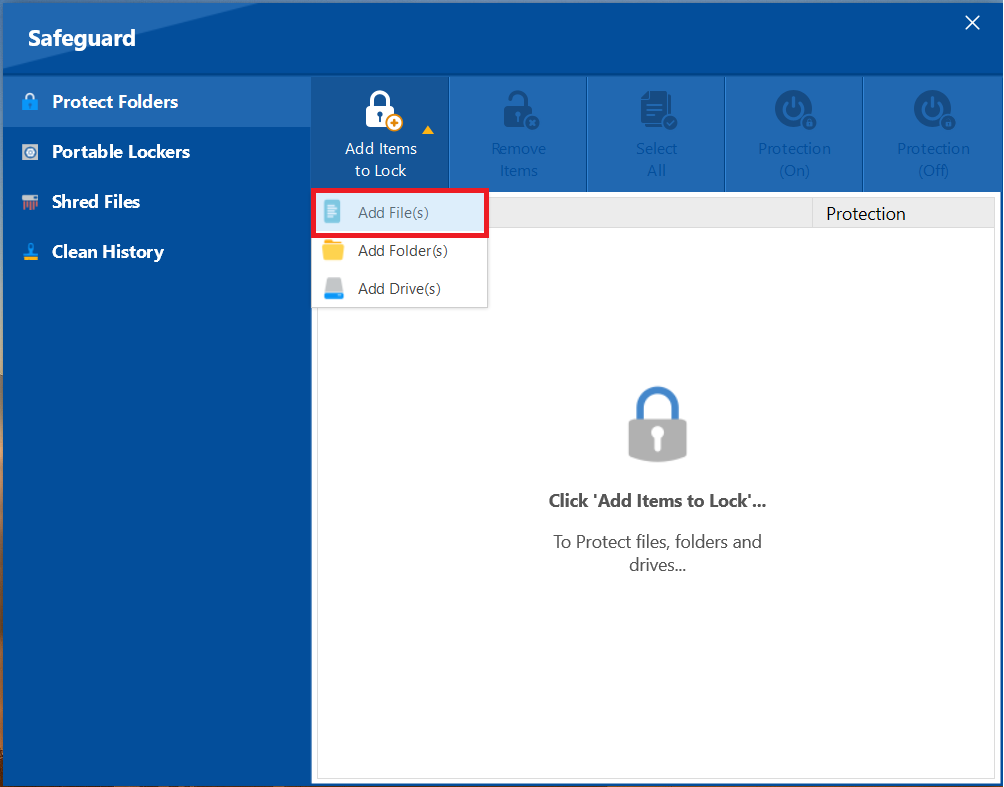
- From the browse menu select your desired image file from its location and Click Open.
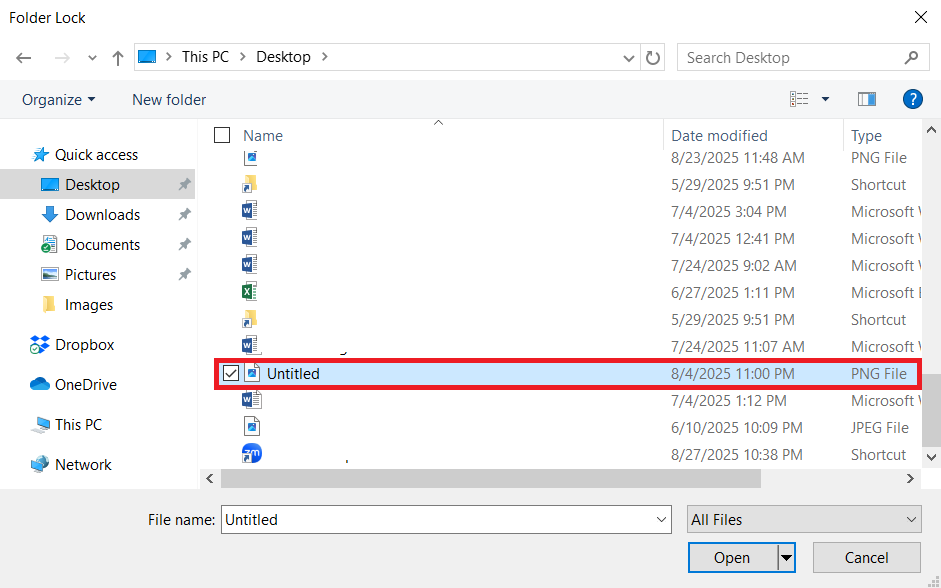
- After successfull addition of your selected photo, your selected one will appear as shown in below screenshot.
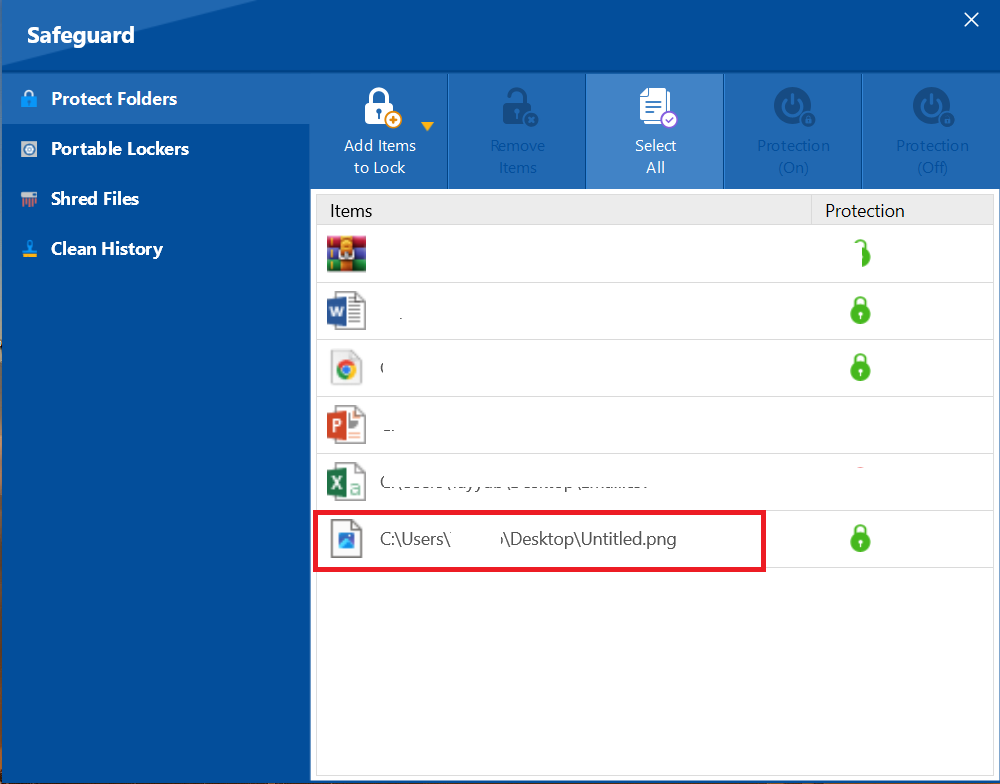
Step 4: Confirm Encryption Status
- A green lock icon will appear under the "Protection" column, signifying that your file has been successfully secured in its current location.
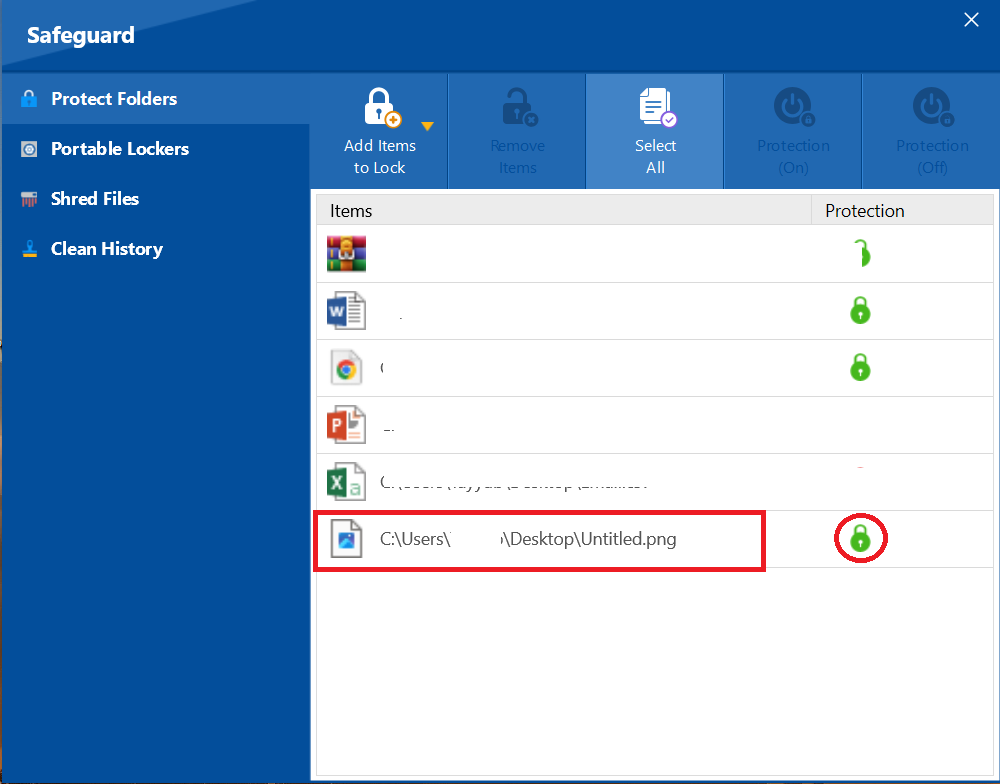
Method 2: Protecting via Desktop Locker
This method is the fastest way to get a single image file into a secure, encrypted container.
Step 1: Open Folder Lock and Your Locker
- Launch the Folder Lock application and enter your master password.
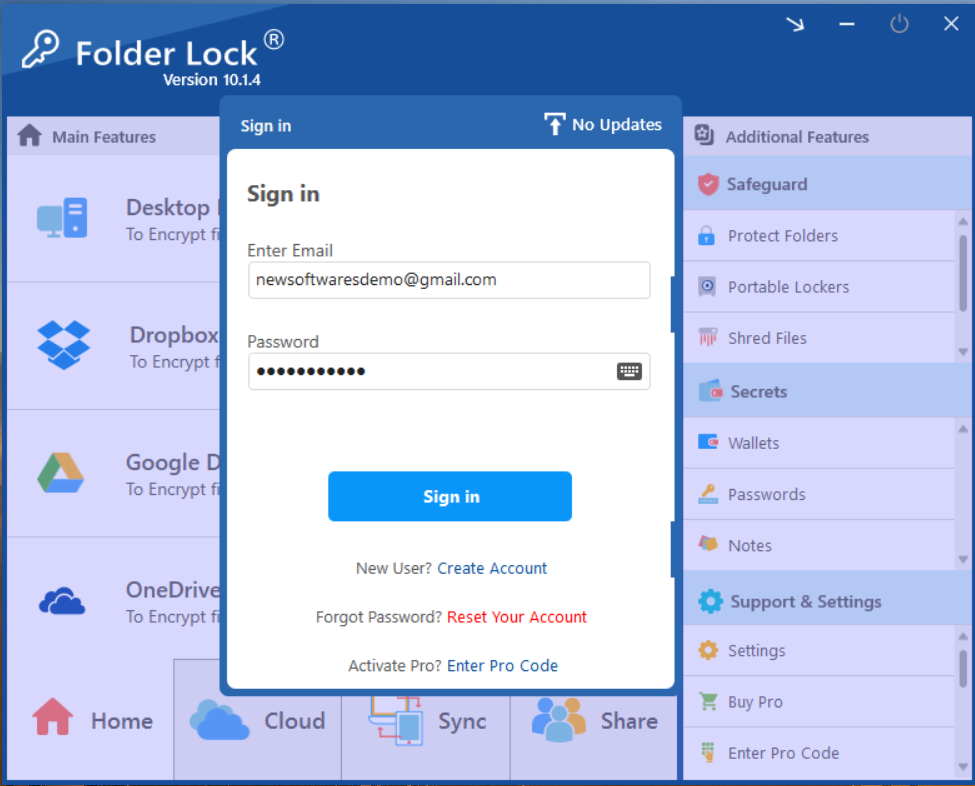
- On the main screen, find the "Desktop Locker" section. If your locker isn't open, click the "Open" button next to it. Your Desktop Locker will open in a new window.
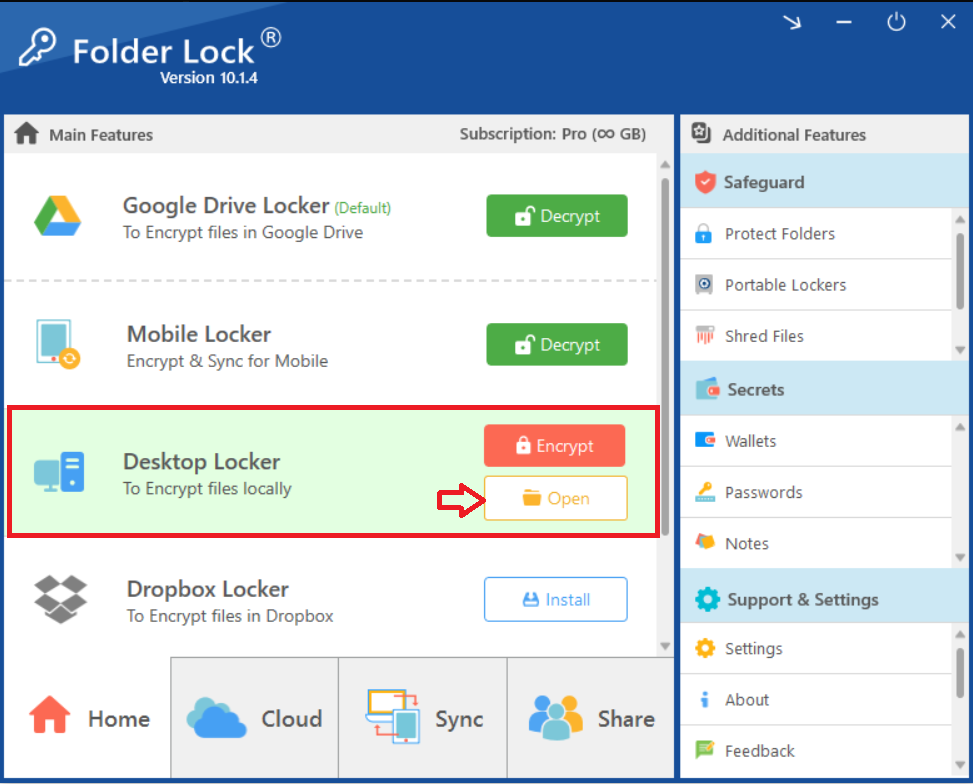
- Clicking on Open will open your Desktop Locker in Windows File explorer as shown in below screenshot.
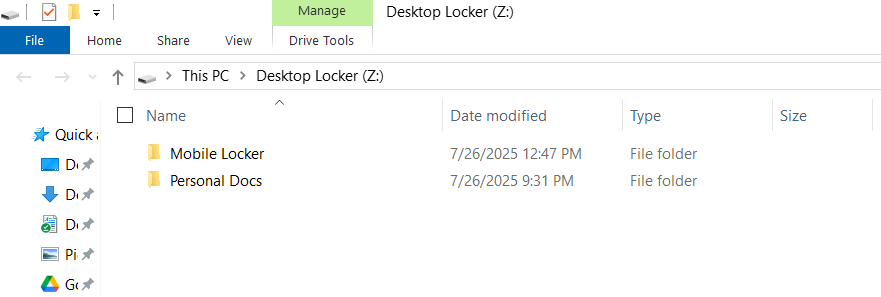
Step 2: Move Your Image File / Photo into the Locker
- Find the photo on your computer that you want to protect. Drag the file and drop it directly into the opened Desktop Locker window.
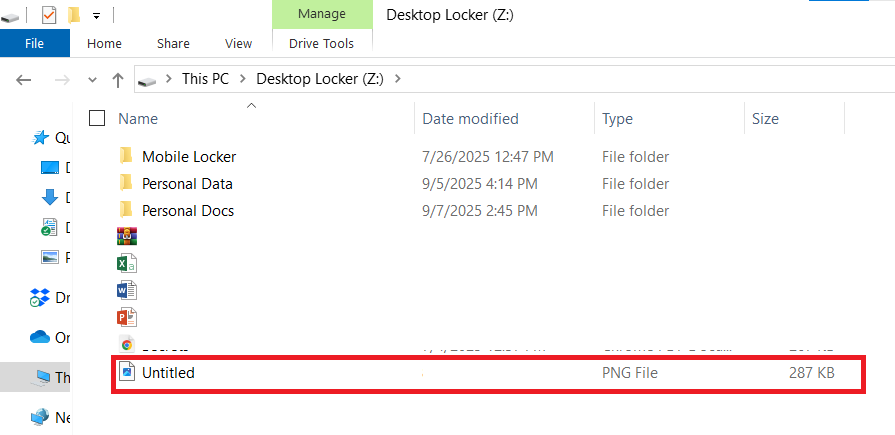
Step 3: Encrypt Your Locker
Once you have moved your photo file inside, return to the main Folder Lock application window. Click the "Encrypt" button next to the Desktop Locker. This action will hide the locker and secure all files inside, including your photo file.
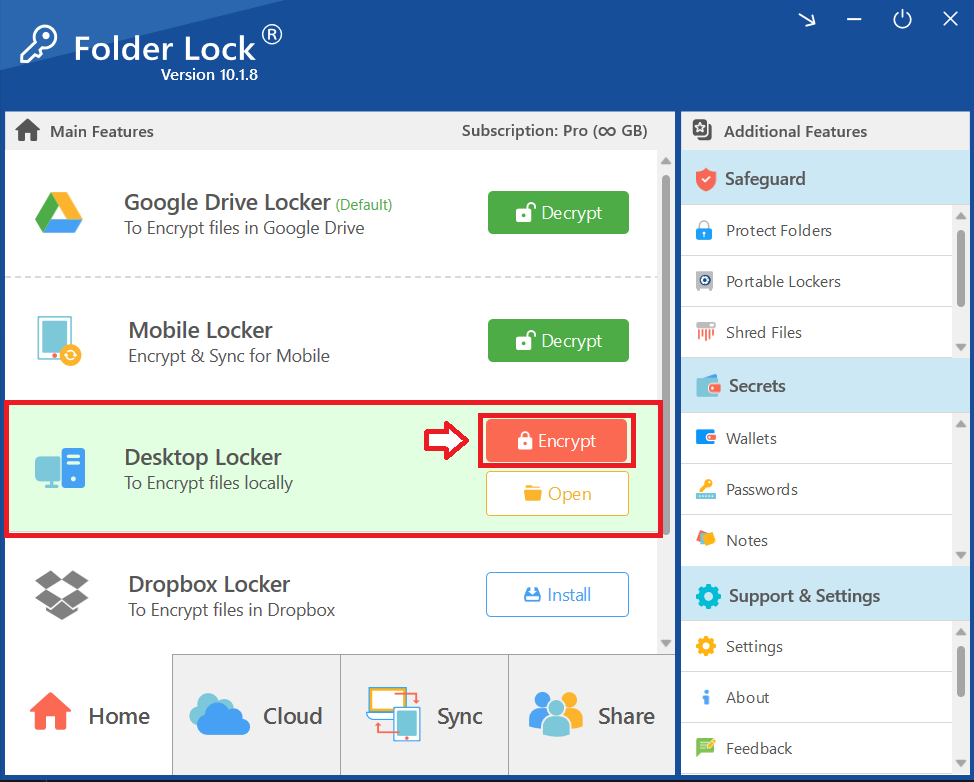
FAQs
Q: What happens to my original photo file?
A: The original file is either moved into the encrypted locker (Method 2) or is securely hidden in its original location, making it inaccessible until you unlock it through Folder Lock.
Q: Can I still view the image in the protected locker?
A: No. You must first decrypt and open the locker to view or edit the files inside.
Q: Is the encryption truly reliable?
A: Absolutely. Folder Lock uses AES 256-bit encryption, the same level of security trusted by governments and major corporations worldwide.
With this comprehensive overview, you have mastered the essential methods for protecting your photos with Folder Lock. By taking a decisive step to encrypt your image files, you ensure your most private moments and creative work are shielded from unauthorized access, giving you complete control over your digital footprint.
